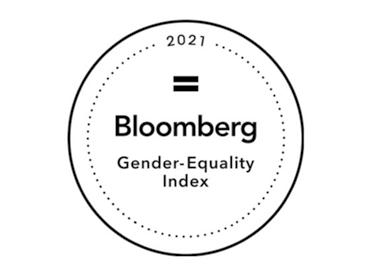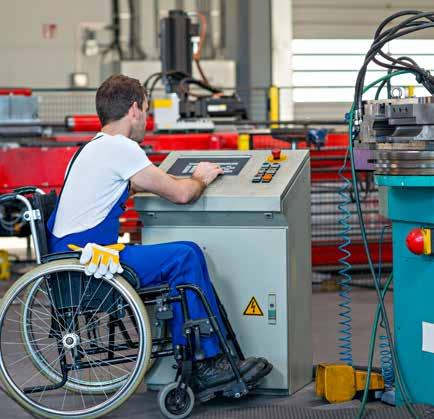
6 minute read
HEALTH & SAFETY
Mine OHS amid a GLOBAL PANDEMIC
Covid-19 impacted many areas of the mining industry, including occupational health and safety (OHS). Louise Woodburn, GM, KBC Health & Safety Risk Solutions, speaks to Inside Mining about OHS during Covid-19, as well as innovative technologies to drive its improvement in the mining industry. By Dineo Phoshoko
Advertisement
Health and safety is a broad term that can have different meanings depending on the context in which it used. From a mining industry perspective, Woodburn explains that mining is a high-risk environment and therefore requires a clear understanding of the legislative framework within the sector, to ensure that both employers and employees are protected from risks to which they are potentially exposed.
She further adds that it is important to identify possible gaps in the legislative framework, which might require the implementation of relevant systems to assist with risk management. In so doing, a culture of OHS will be entrenched in the industry.
Impact of Covid-19 on mine OHS
The global pandemic has mostly had a negative impact on all industries; however, Woodburn believes that there are some positive aspects to draw from Covid-19. From an OHS point of view, the pandemic has created awareness around legislation related to the management of biological agents. Covid-19 falls in the category of biological agents.
Woodburn explains that Covid-19 serves as a practical example to manage something that has been widely discussed in the legislation but has been challenging to implement. “It has highlighted the need for health and safety within businesses.”
In addition, the pandemic has also highlighted certain vulnerabilities in businesses when it comes to OHS protocols. “It shows us that if we can be proactive with health and safety, we could have
Louise Woodburn has 25 years’ experience in the safety industry (Credit: KBC Health & Safety)
HEALTH & SAFETY
actually had a plan in place before the pandemic hit,” she says.
Another positive aspect that can be drawn from it is that businesses are starting to appreciate and understand the value of OHS, as well as the importance of identifying risks and having contingency plans in place to avoid serious repercussions in the event of a pandemic.
Adhering to regulations
According to experts at the World Health Organization, the Covid-19 pandemic is expected to be around for at least two years. Since the outbreak of the pandemic, local and international scientists have been hard at work trying to get as much information as possible and understand the virus better. As such, new information pertaining to the virus is released regularly.
Woodburn says that OHS regulations have been updated by the Department of Employment and Labour as and when there is new information about the virus. “They have been updating on a regular basis to make sure that they are catching all the elements that need to be caught.”
The pandemic has also put the spotlight on sick leave policies and the number of people taking time off work. Furthermore, it has also helped people understand the consequences of not adhering to Covid-19 regulations. “It has changed the way businesses look at how they are managing health and safety and how it can impact on production if they do not get it right,” Woodburn explains.
Within the mining industry specifically, Woodburn believes that, unlike established mining houses, junior miners will also start improving their efforts when it comes to OHS, making sure that they understand their legislative responsibility. “I think we are going to see an uptake in smaller mining houses wanting to be compliant and actually implementing systems.”
Considerations for products and technologies
Woodburn outlines two key elements to consider when it comes to the latest OHS products and technologies. The first is that all businesses need to have policies and procedures pertaining to OHS. Whether they are documented in hard copies or electronically, it’s important that businesses have their legal framework done. The second element is complying with the globally recognised ISO 45001 Standard for Occupational Health and Safety. “I think that gives them a basis to then make sure that they are aligned with best practices in the world for managing health and safety,” Woodburn says.
Additional information about health and safety needs to be documented and regularly updated. Woodburn advises businesses to have a safety, health, environment and quality (SHEQ) IT tool that will assist them in keeping track of expiring documents and remain up to date with reviews and the latest information about OHS. A solid IT system further serves as an electronic management tool.
More importantly, Woodburn says it is imperative for mine companies to ensure their contractors are ISO compliant. “The biggest challenge that mines have at the moment is that they may have the systems in place, but the contractors they are bringing in are often smaller businesses that don’t have all the processes and policies in place.”
Technologies to enhance mine health and safety
KBC has technological innovations that enhance health and safety in the mines. Among them is the Passport 360 Contractor Management System. Passport 360 makes use of QR codes and scanners that create a checklist for OHS requirements on specific equipment or machinery when they are scanned.
This is a great innovation for the mining industry because there are different types of equipment and machinery on a mine site, each with their own checklists and registers that need to be checked from a legal compliance point of view. “The QR codes and scanners have enabled us to become more proactive in making sure each piece of equipment has a QR code that can be accessed in real time by anyone working on-site, to understand what the risks are and what the necessary checks and balances are to have them under control,” Woodburn says.
AI and BI reporting
Artificial intelligence (AI) and business intelligence (BI) reporting is another useful innovation where cameras measure stress levels in the working environment. The information is fed back to a computer that analyses the data using AI. BI technologies then generate a report based on in the AI data.
This is beneficial as it enables businesses to identify potentially serious risks. Once risks are identified, businesses would be able to implement the necessary controls to address them accordingly.

HEALTH & SAFETY

Virtual safety officer
Most mines have a SHEQ team that consists of safety officers, administrators and other key members. “What we are finding is that a lot of the contractors who are working on those mines and within other industries are battling to be able to afford a full-time resource,” says Woodburn. Instead of a full-time SHEQ team, contractors can use the virtual safety officer (VSO) as an alternative.
This option is more cost-effective for contractors as they are billed on an hourly basis instead of a fulltime service. A scope of work is used to determine the potential OHS risks and then a specific programme is customised for clients based on the risks identified. “We unpack with each client to understand what their scope of work is, what their risks are, and how much time they would need.”
VSO is divided between face-to-face and virtual interactions between KBC and the client. “Some of that is face to face, where we will physically go out to the mine site and do audits, inspections and investigations.” During virtual meetings, documentation, policies and procedures are discussed. The virtual interactions are also used to regularly touch base with the clients to find out if they are on track with their OHS needs.
“We have become much smarter in terms of being able to use technology to our advantage,” says Woodburn. This includes conducting training, induction and virtual tours of the mine sites. Woodburn stresses the importance of ensuring that the virtual tours are done by a SHEQ professional with the relevant experience. “You need to make sure that the person doing the inspection understands the environment.”
To conclude, Woodburn believes that if mining houses compel their contractors to become ISO compliant, there will be an improvement in the level of safety compliance in the industry. “We all need to be striving for best practice.”










